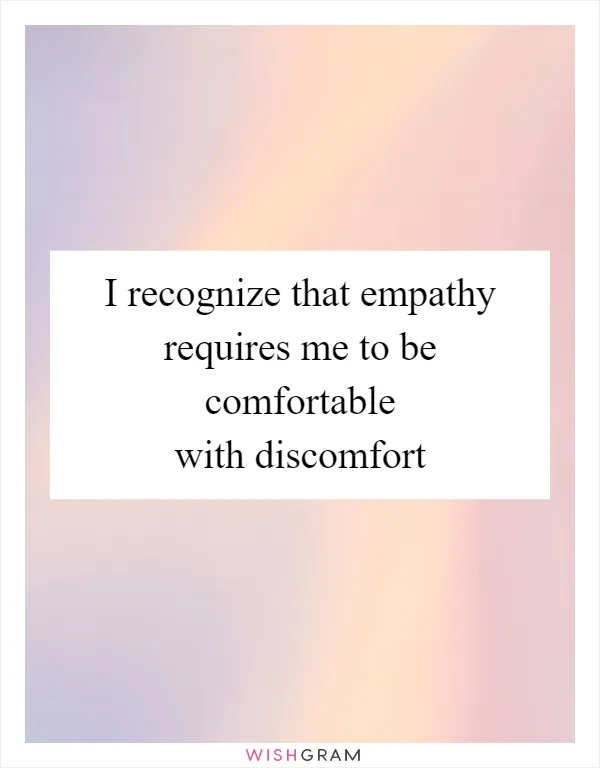I recognize that empathy requires me to be comfortable with discomfort
Empathy is a powerful tool that allows you to connect with others on a deeper level. It requires you to step outside of your own experiences and understand the emotions and perspectives of those around you. However, empathy is not always easy. It can be uncomfortable to confront the pain and suffering of others, especially when it hits close to home. That's why the affirmation "I recognize that empathy requires me to be comfortable with discomfort" is so important.
When you practice empathy, you are opening yourself up to the emotions of others. This can be a difficult and sometimes painful experience. You may feel overwhelmed by the sadness or anger of someone else, or you may be forced to confront your own biases and prejudices. It's natural to want to avoid these uncomfortable feelings, but doing so can prevent you from truly connecting with others.
By recognizing that empathy requires you to be comfortable with discomfort, you are acknowledging that it's okay to feel uncomfortable. You are giving yourself permission to sit with difficult emotions and to explore them without judgment. This can be a powerful way to build resilience and to develop a deeper understanding of yourself and others.
Of course, being comfortable with discomfort is easier said than done. It takes practice and patience to learn how to sit with difficult emotions without becoming overwhelmed. One way to do this is to practice mindfulness. Mindfulness involves paying attention to the present moment without judgment. When you practice mindfulness, you can learn to observe your thoughts and emotions without getting caught up in them. This can help you to stay grounded and centered even when you are confronted with difficult emotions.
Another way to build your empathy muscles is to practice active listening. Active listening involves fully engaging with the person you are talking to and trying to understand their perspective. This means putting aside your own biases and assumptions and really listening to what the other person is saying. When you practice active listening, you can develop a deeper understanding of others and build stronger relationships.
